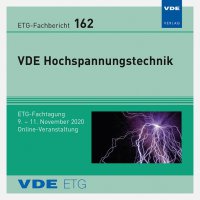Transient Investigations of Earthing and Equipotential Bonding Sys-tems for HVDC Power Transmission Cables
Konferenz: VDE Hochspannungstechnik - ETG-Fachtagung
09.11.2020 - 11.11.2020 in online
Tagungsband: VDE Hochspannungstechnik
Seiten: 6Sprache: EnglischTyp: PDF
Autoren:
Füuernschuss, Martin; Schuerhuber, Robert; Renner, Herwig; Schmautzer, Ernst (Institute of Electrical Power Systems, TU Graz, Austria)
Pichler, Moritz (KPMG Advisory GmbH, Austria)
Pack, Stephan (Institute of High Voltage Engineering and System Performance, TU Graz, Austria)
Inhalt:
In the near future, electrical power transmission with high-voltage direct current cable systems with a length exceeding several 100 km will become more important. Such HVDC systems must be reliable and safe, as they make a significant contribution to security of supply with the planned transmission capacities in the gigawatt range. Due to the high rated voltage, currents in normal and faulty situations and long transmission distances, high demands are required on the earthing and equipotential bonding system. Its task is to protect persons and material goods from impermissibly high step and touch voltages during a fault and to protect the electrical system components from disturbances and damages. A particular challenge is the handling of the shield earthing of HVDC cables – the manufacturers of such cables specify a maximum value for the shield-to earth voltage (shield voltage). In order to minimize the shield voltages during normal operation and in case of a fault, the cable shields are connected and earthed along the cable route in so-called link boxes. The aim of operators of HVDC transmission lines is to minimize the number of link boxes, as these generate costs both in investment and in operation (e.g. through maintenance). Often so-called earth continuity conductors (ECCs), which are usually made up of bare copper and are attached to improve the earthing conditions. For monitoring of the cable route, the shields are led into measurement boxes near the surface, in which the shields are accessible but not directly earthed. In order to show the transient processes during an earth fault between an inner conductor and the earth and to define the requirements for the earthing system for both the measurement boxes and the link boxes, a 400 km long HVDC transmission cable route has been simulated with EMTP-RV1. The feasibility of an ECC is also discussed with regard to the required number of link boxes, where the cable shield earthed. The criterion here is the occurring shield voltage.


